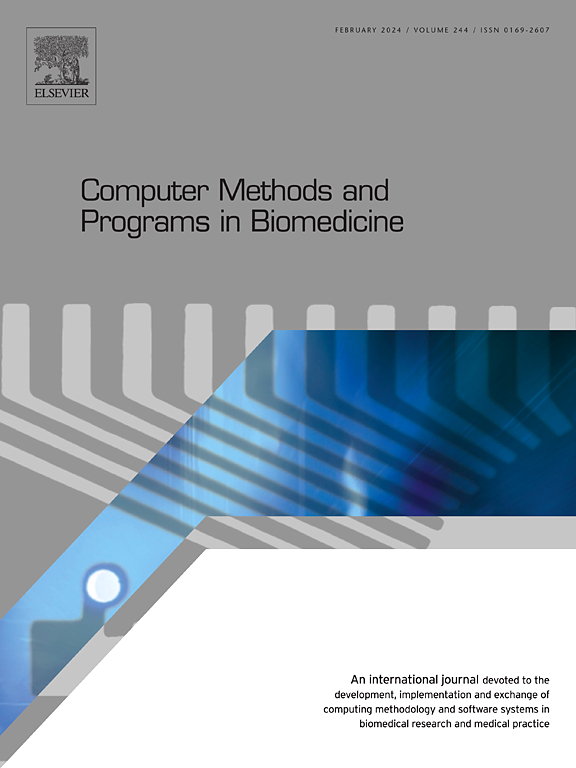Raw photoplethysmogram waveforms versus peak-to-peak intervals for machine learning detection of atrial fibrillation: Does waveform matter?
IF 4.9
2区 医学
Q1 COMPUTER SCIENCE, INTERDISCIPLINARY APPLICATIONS
引用次数: 0
Abstract
Background
Machine learning-based analysis can accurately detect atrial fibrillation (AF) from photoplethysmograms (PPGs), however the computational requirements for analyzing raw PPG waveforms can be significant. The analysis of PPG-derived peak-to-peak intervals may offer a more feasible solution for smartphone deployment, provided the diagnostic utility is comparable.
Aims
To compare raw PPG waveforms and PPG-derived peak-to-peak intervals as input signals for machine learning detection of AF.
Methods
We developed specialized neural networks for raw waveform and peak-to-peak interval analyses and trained them on 7,704 PPGs from 106 patients from the TeleCheck-AF project. We evaluated the neural networks on 48,912 PPGs from 416 patients from the VIRTUAL-SAFARI project. We recorded computational requirements, sensitivity, positive predictive value (PPV), and F1 score.
Results
With 1.6 million trainable parameters, the waveform model was more than 100 times as complex as the interval model (15,513 parameters) and required 19 times more computational power. In external validation, metrics were comparable between the interval and waveform models. For the interval model vs. the waveform model, sensitivity was 91.7 % vs. 81.9 % (p=0.4), PPV was 80.5 % vs. 84.5 % (p=0.3), and F1 score was 85.6 % vs. 81.3 % (p=0.5), respectively.
Conclusion
PPG-derived peak-to-peak intervals and PPG waveforms were equivalent as input signals to neural networks in terms of accurate AF detection. The reduced computational requirements of the interval model make it a more suitable option for deployment on digital end-user devices such as smartphones.
原始光电容积脉搏波波形与峰对峰间隔用于机器学习检测心房颤动:波形重要吗?
背景:基于机器学习的分析可以准确地从光容积描记图(PPGs)中检测房颤(AF),但是分析原始PPG波形的计算需求可能很大。如果诊断工具具有可比性,对ppg衍生的峰间间隔的分析可能为智能手机部署提供更可行的解决方案。目的:比较原始的PPG波形和PPG衍生的峰间间隔作为af机器学习检测的输入信号。方法:我们开发了专门的神经网络用于原始波形和峰间间隔分析,并对来自TeleCheck-AF项目的106名患者的7704个PPG进行了训练。我们对来自VIRTUAL-SAFARI项目的416名患者的48,912个ppg进行了神经网络评估。我们记录计算需求、灵敏度、阳性预测值(PPV)和F1评分。结果:波形模型具有160万个可训练参数,复杂度是区间模型(15513个参数)的100倍以上,计算能力是区间模型(15513个参数)的19倍。在外部验证中,间隔和波形模型之间的度量是可比较的。区间模型和波形模型的敏感性分别为91.7%和81.9% (p=0.4), PPV分别为80.5%和84.5% (p=0.3), F1评分分别为85.6%和81.3% (p=0.5)。结论:在准确检测AF方面,PPG衍生的峰间间隔和PPG波形可作为神经网络的输入信号。区间模型的计算需求减少,使其更适合部署在智能手机等数字终端用户设备上。
本文章由计算机程序翻译,如有差异,请以英文原文为准。
求助全文
约1分钟内获得全文
求助全文
来源期刊

Computer methods and programs in biomedicine
工程技术-工程:生物医学
CiteScore
12.30
自引率
6.60%
发文量
601
审稿时长
135 days
期刊介绍:
To encourage the development of formal computing methods, and their application in biomedical research and medical practice, by illustration of fundamental principles in biomedical informatics research; to stimulate basic research into application software design; to report the state of research of biomedical information processing projects; to report new computer methodologies applied in biomedical areas; the eventual distribution of demonstrable software to avoid duplication of effort; to provide a forum for discussion and improvement of existing software; to optimize contact between national organizations and regional user groups by promoting an international exchange of information on formal methods, standards and software in biomedicine.
Computer Methods and Programs in Biomedicine covers computing methodology and software systems derived from computing science for implementation in all aspects of biomedical research and medical practice. It is designed to serve: biochemists; biologists; geneticists; immunologists; neuroscientists; pharmacologists; toxicologists; clinicians; epidemiologists; psychiatrists; psychologists; cardiologists; chemists; (radio)physicists; computer scientists; programmers and systems analysts; biomedical, clinical, electrical and other engineers; teachers of medical informatics and users of educational software.
 求助内容:
求助内容: 应助结果提醒方式:
应助结果提醒方式:


